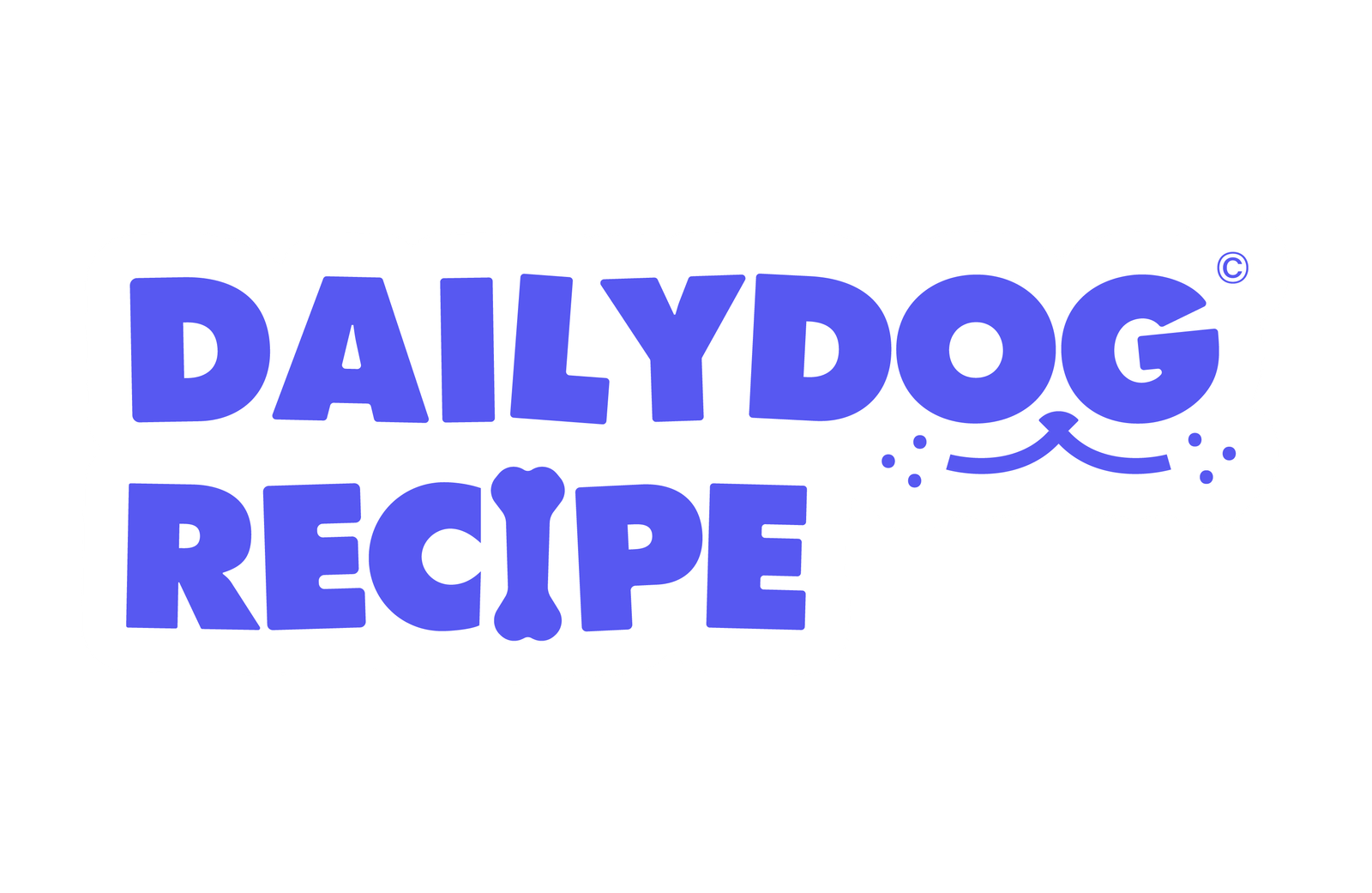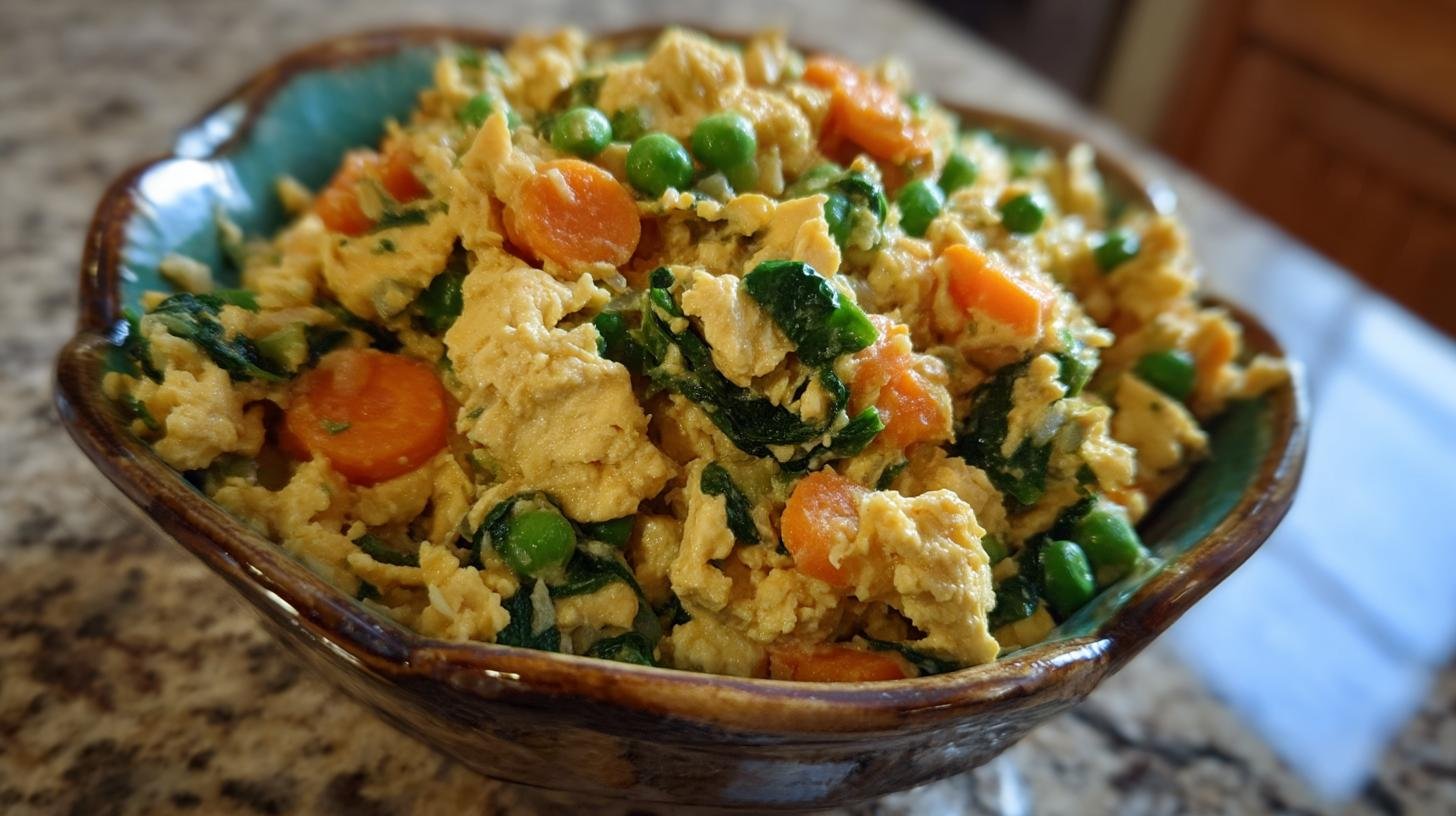Let me tell you about the day I realized store-bought puppy food wasn’t cutting it for my rambunctious golden retriever, Bear. As he grew from a squishy potato into a lanky teenager, his energy dipped between meals, and his coat lost that puppy-soft glow. That’s when my vet dropped the truth bomb: “Growing pups need real food doing real work.” We teamed up to create this DIY puppy food for growth recipe, and let me tell you – watching Bear’s tail wag at mealtime now? Pure magic.
This isn’t just about saving money (though you’ll love that part). It’s about knowing exactly what fuels those zoomies and growing bones. I’ll never forget the first time I stirred this mix – the smell of browning chicken, the vibrant orange carrots, the way Bear’s nose appeared INSTANTLY on the counter edge. But here’s the real secret: making puppy food isn’t complicated. With a few simple ingredients and 35 minutes, you’ll create meals that make your vet nod approvingly and your pup’s bowl disappear faster than a squirrel in the backyard.
Quick note: I’m not a vet, just a dog mom who’s obsessed with nutrition. Always consult your puppy’s healthcare team before switching foods – we did three check-ins while perfecting this recipe. Now, let’s get those paws dirty in the kitchen!
Ingredients for DIY Puppy Food for Growth
Let’s talk building blocks! My vet stressed that every ingredient here pulls double duty – fueling growth while keeping those puppy bellies happy. Here’s what you’ll need (and why each matters):
- 1 lb ground chicken – Not turkey unless your pup needs a leaner option (we’ll chat substitutions later). Chicken’s high in protein for muscle development without overwhelming tiny digestive systems.
- 1/2 cup finely chopped carrots – Chopped, not grated! Bigger pieces prevent choking but still soften enough for sensitive teeth. The beta-carotene? Perfect for eye health.
- 1/4 cup peas – Frozen works great! They’re little fiber bombs that aid digestion. Just thaw ’em first so they mix evenly.
- 1 tbsp olive oil – My secret for a shiny coat. It’s gentler on puppy tummies than coconut oil, according to Bear’s vet.
- 1/4 tsp calcium carbonate – Non-negotiable for bone growth, but always confirm dosage with your vet first. I keep mine in a labeled spice jar!
- 1/4 cup unsalted chicken broth – Skip the store-bought stuff with onions. I simmer wings with water for 20 minutes – easy peasy.
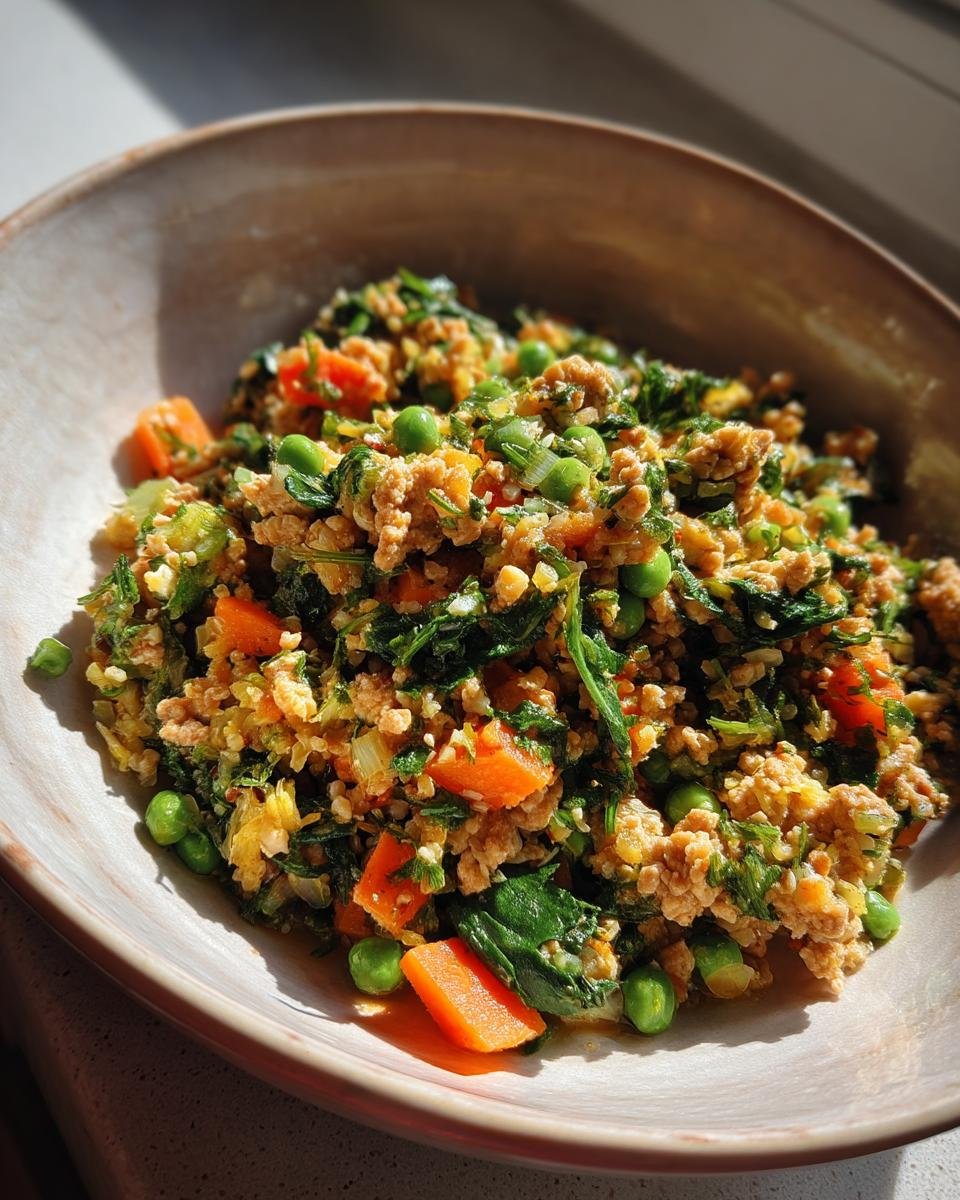
See? No weird powders or hard-to-find items. Just real food doing real work. Now let’s get cooking!
How to Make DIY Puppy Food for Growth
Okay, grab your favorite big spoon and let’s get messy! This process is simpler than teaching “sit,” but I’ve got a few tricks to make it foolproof. Follow these steps, and you’ll have a meal that’ll make your pup’s tail spin like a helicopter rotor.
Preparing the Protein Base
I always start with cold ground chicken straight from the fridge – room temp meat can get gummy. Use a non-stick skillet on medium heat (no oil needed – chicken has enough fat). Break up the meat with a wooden spoon like you’re playing tug-of-war. Cook until every pink spot disappears – undercooked poultry is a big no-no for pups.
Here’s where I messed up once: drain the fat TWICE. First, tilt the pan over a bowl (careful – grease splatters!), then press the meat with paper towels. Bear once got the runs from too much grease, and let’s just say… we both learned our lesson.
Cooking Puppy-Safe Vegetables
While the chicken cools, let’s tackle veggies. I use a steamer basket because boiling zaps nutrients. Carrots go in first – they need 8 minutes to soften. Toss in peas and spinach at the 5-minute mark. You want them tender enough to squish between fingers but still bright green.
Chop everything into pea-sized pieces – bigger than you’d think! My vet showed me a nifty trick: hold two forks back-to-back. If the piece fits between the tines, it’s safe for tiny jaws. Pro tip: freeze spinach before chopping to prevent leafy messes everywhere!
Mixing and Storing DIY Puppy Food for Growth
Now the fun part! Dump warm (not hot) chicken, veggies, and rice into a big bowl. Add olive oil and calcium powder – I stir clockwise 10 times, then counter-clockwise 10 times. Sounds silly, but Bear’s vet said even mixing prevents clumps.
Cool completely before serving – I spread mine on a baking sheet for 20 minutes. Portion sizes depend on breed: my neighbor’s chihuahua gets 1/4 cup per meal, while Bear inhales 1 cup twice daily. Store in glass jars with dates labeled – puppies shouldn’t eat leftovers older than your last Netflix binge (3 days max!).
P.S. Freeze extras in muffin tins! Pop out frozen “pupcakes” and thaw overnight. Perfect for when your furball looks at you like you’ve starved them for weeks between meals.
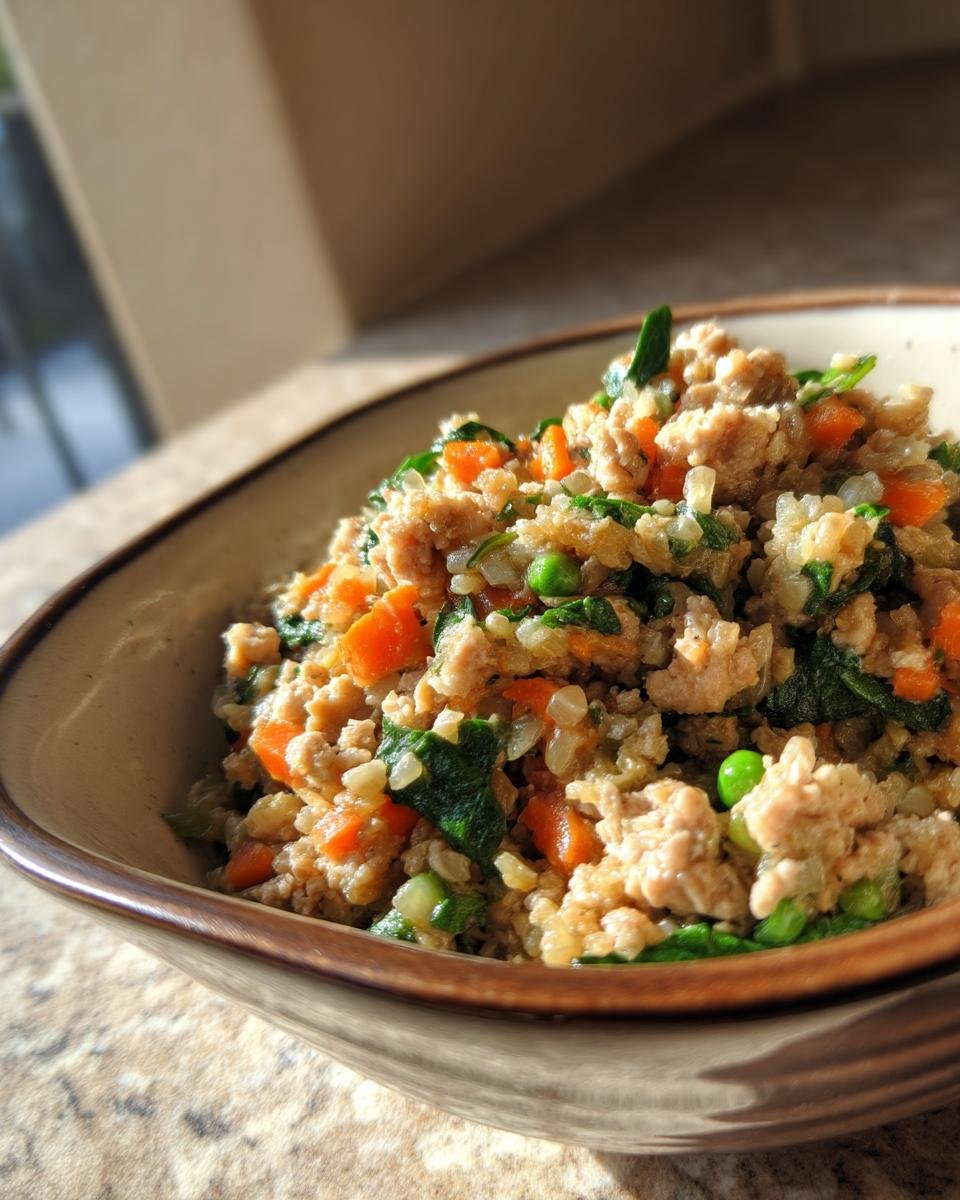
Why You’ll Love This DIY Puppy Food for Growth
Let’s be real – watching your pup lick their bowl clean never gets old. But this recipe? It’s a game-changer for three huge reasons:
Your wallet will thank you. Commercial puppy food costs me $75/month for Bear. This DIY version? $35 tops. Buying chicken in bulk and frozen veggies slashes the price without skimping on quality.
Customization is king. Got a picky eater? Swap peas for green beans. Grain-sensitive? Use quinoa instead of rice. I once made a salmon version when chicken was sold out – Bear did zoomies around the kitchen in approval.
Visible results in days. Within a week, Bear’s coat went from dull to “dog shampoo commercial” shiny. His energy levels? Let’s just say he now outlasts my morning coffee. No more 3pm nap crashes – just steady, playful growth.
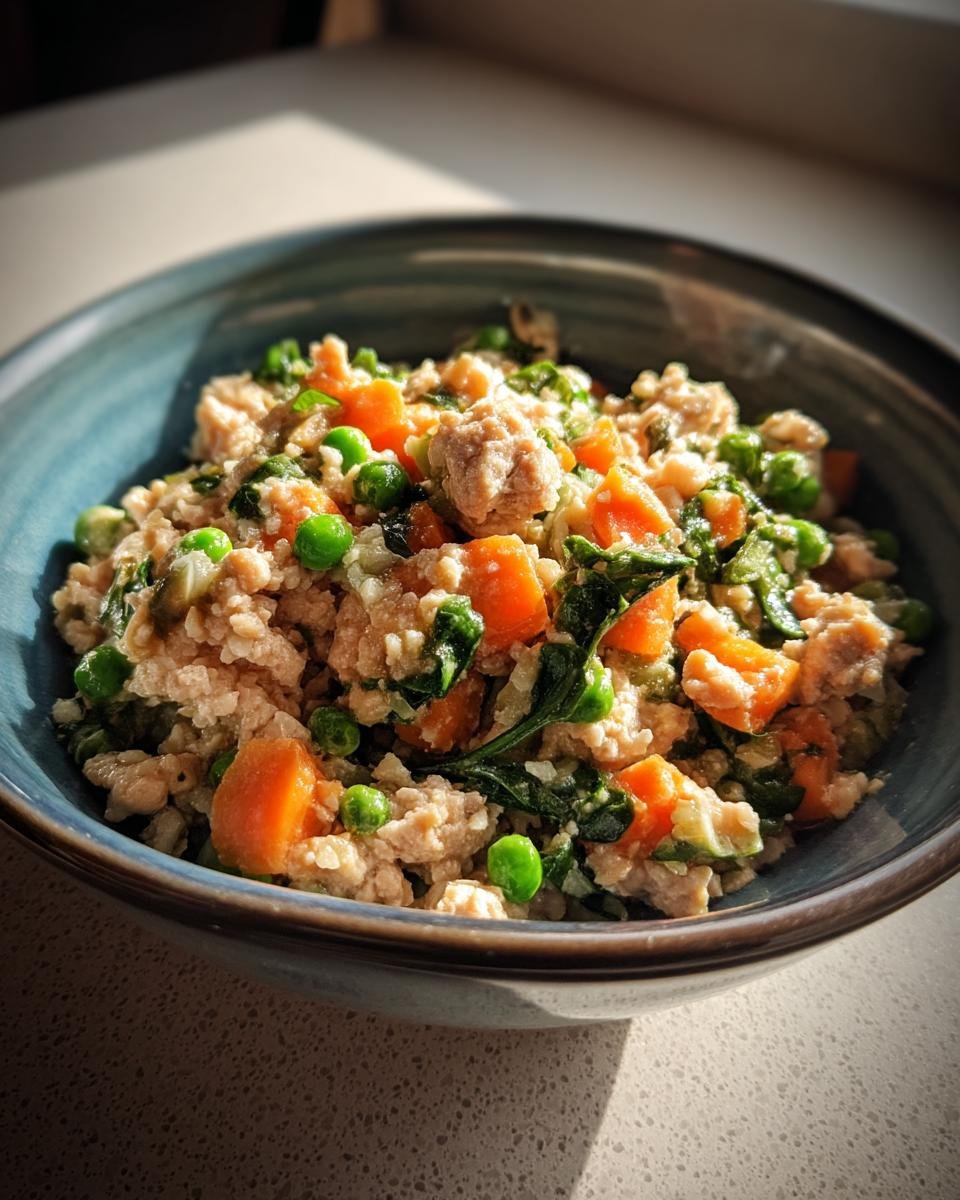
Ingredient Notes for DIY Puppy Food for Growth
Let’s play ingredient detective! Through trial and error (and one panicked vet visit), I learned these swaps and safety tips make all the difference in DIY puppy food. Here’s the scoop:
Turkey vs. chicken: I use ground turkey when Bear needs a leaner meal – maybe he’s been extra couch-potato-ish. But here’s the catch: add 1 tsp fish oil to keep his coat shiny since turkey’s lower in fat. Always choose 93% lean – anything less gets greasy in puppy tummies.
Quinoa warriors: When my trainer suggested grain-free options, I swapped brown rice for rinsed quinoa. Cook it in bone broth (no salt!) for extra minerals. Pro tip: quinoa expands – use 1/3 cup dry to replace 1 cup cooked rice.
Onion/garlic alert: Found this out the hard way when Bear sniffed out my stir-fry leftovers. Even small amounts damage red blood cells! I now keep a “NO” list on my fridge: chives, leeks, shallots too. Check broth labels twice – sneaky onion powder lurks everywhere!
Calcium carbonate why: Puppies need 50mg calcium per pound daily for bone growth. Without it, Bear’s vet warned me about rickets risk. But too much causes worse problems – hence the 1/4 tsp strict measurement. I use human-grade powder from the pharmacy, not crushed eggshells (too inconsistent).
Remember: flexibility is great with proteins and grains, but some rules aren’t meant to be broken. When in doubt, text your vet a photo of your ingredient – I’ve done this mid-grocery aisle more times than I’ll admit!
Tips for Perfect DIY Puppy Food for Growth
Let’s talk pro tips – the stuff I wish I’d known before Bear turned his nose up at my first lumpy batch! These little hacks make all the difference between “meh” and “MORE PLEASE” from your pup.
Food scale = best $15 ever spent. Measuring cups lie! I learned this when Bear got diarrhea from too much rice – turns out my “cup” was really 1.5 cups. Now I weigh everything. 4oz of chicken per meal keeps his growth steady without overfeeding.
Slow transitions save tummies. When switching from kibble, mix 25% new food with 75% old for three days. My neighbor’s Lab had explosive results (literally) when they rushed it. Now we joke about “The Great Sweet Potato Incident of 2022.”
Spice racks are enemy territory. No garlic powder “for flavor” – trust me, pups don’t care! I once added a pinch of parsley for color… $300 vet bill later, I keep herbs locked up. Their noses detect flavors we can’t!
Portion like a detective. Bear’s cousin Luna (a Labrador) needed DOUBLE servings at 4 months – her energy burned hotter than a campfire. We tracked her weight weekly and adjusted until her ribs stayed hidden but palpable. Your vet’s your partner here!
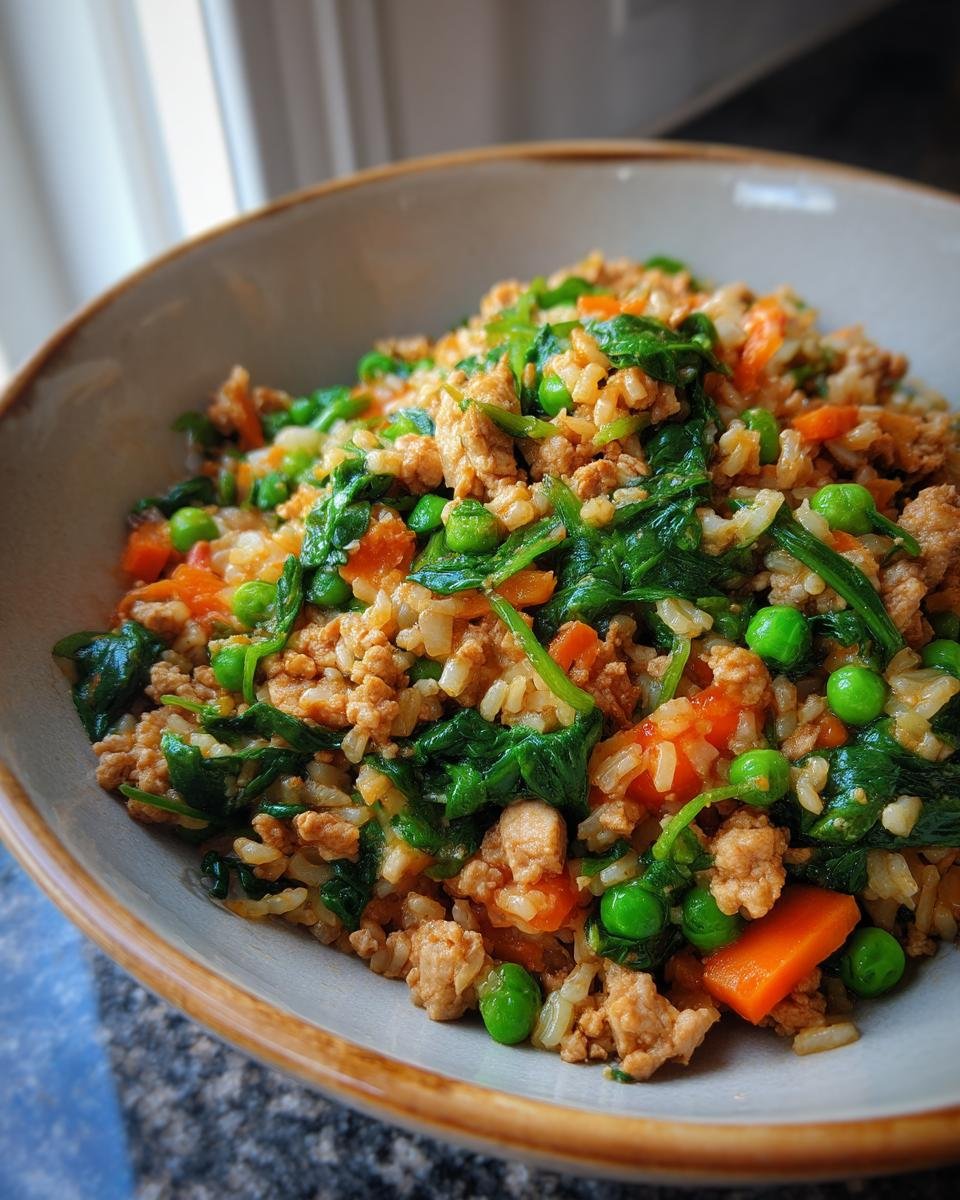
Storage & Reheating Instructions
Here’s the truth: I once ruined a whole batch by leaving it on the counter “just for a few minutes” (spoiler: forgot it for 3 hours). Airtight containers are your BFF – I repurpose glass pasta jars because plastic absorbs smells. Fridge life? Three days max. After that, even Bear’s iron stomach gets suspicious.
Freezing’s where the magic happens! Pour leftovers into silicone muffin molds – they make perfect “pupcakes.” Once frozen, pop them into freezer bags labeled with dates. Thaw overnight in the fridge or on the counter for 30 minutes. Never microwave! Hot spots burn tongues, and cold centers upset tummies. If you’re in a rush, float the sealed bag in warm water while you grab the leash.
P.S. Do the sniff test – if it smells funky to you, it’s DEFINITELY funky for pups. When in doubt, toss it out!
Nutritional Information for DIY Puppy Food for Growth
Let’s break down what’s fueling those puppy kisses! Here’s the scoop per 1/2 cup serving (adjusted weekly with Bear’s vet):
- Calories: 180
- Protein: 14g (Chicken’s doing heavy lifting!)
- Fat: 8g (Hello, shiny coat!)
- Carbs: 12g (Brown rice energy boost)
- Fiber: 2g (Happy tummy alert)
- Sugar: 1g (All from veggies – no sneaky additives)
Remember: Estimates vary based on ingredient brands. My chicken might be juicier than yours! Always consult your vet for breed-specific needs – a Great Dane pup’s plate looks wildly different from a Dachshund’s snack.
DIY Puppy Food for Growth FAQs
Can I use beef instead of chicken?
Absolutely! I’ve made this with lean ground beef when chicken prices spiked last summer. Just drain twice as much fat – beef tends to be richer. Pro tip: Add 1 tsp flaxseed oil to balance the higher iron content. Bear’s vet recommended this swap for larger breeds like Shepherds needing extra minerals.
Is this suitable for grain-free diets?
Yep – swap brown rice for equal parts cooked quinoa or mashed sweet potato. My neighbor’s Border Collie thrives on the sweet potato version! Just rinse quinoa thoroughly (that bitter coating upsets puppy tummies) and cook until it’s mushy-soft for tiny teeth.
How often should I feed this to my puppy?
Most pups need 3-4 meals daily until 6 months old. I followed Bear’s vet-approved schedule: 1/2 cup per 5lbs body weight, split into servings. But here’s the kicker – my friend’s Frenchie needed smaller, more frequent meals to avoid bloating. Always check your pup’s ribs; you should feel them like a peach’s fuzz, not see them!
Bonus Q: Can I freeze portions long-term?
You bet! I stash month’s worth in labeled freezer bags. Thaw overnight in the fridge – no microwave shortcuts unless you want a sad, soggy mess. Once, I forgot to label a batch and accidentally ate it thinking it was chili… 0/10 do not recommend!
Share Your Puppy’s Progress
Nothing makes my day like seeing your pups dive into their homemade meals! When my neighbor texted me a video of her schnauzer licking the bowl clean, I literally cried happy tears. Tag me @HealthyPawKitchen or drop a photo in the comments – let’s build a wall of wagging tails and messy eaters. Bear’s waiting to see his new foodie friends!
Print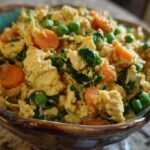
DIY Puppy Food for Growth: 35-Minute Miracle for Healthy Growth
- Total Time: 35 minutes
- Yield: 4 cups 1x
- Diet: Gluten Free
Description
A nutritious homemade recipe for growing puppies, packed with protein and essential nutrients to support healthy development and energy.
Ingredients
- 1 lb ground chicken (or turkey)
- 1 cup cooked brown rice
- 1/2 cup finely chopped carrots
- 1/2 cup chopped spinach
- 1/4 cup peas
- 1 tbsp olive oil
- 1/4 tsp calcium carbonate (consult your vet for dosage)
- 1/4 cup plain, unsalted chicken broth
Instructions
- Cook ground chicken in a skillet over medium heat until fully browned. Drain excess fat.
- Steam carrots, spinach, and peas until tender, then chop into small pieces.
- Mix cooked chicken, vegetables, and brown rice in a large bowl.
- Add olive oil and calcium carbonate, then stir in chicken broth to moisten.
- Cool completely before serving. Store leftovers in an airtight container for up to 3 days.
Notes
- Consult your veterinarian before changing your puppy’s diet.
- Adjust portion sizes based on your puppy’s breed and weight.
- Avoid onions, garlic, and spices, as they can harm dogs.
- Freeze portions for longer storage.
- Prep Time: 15 minutes
- Cook Time: 20 minutes
- Category: Pet Food
- Method: Stovetop
- Cuisine: Pet Food
Nutrition
- Serving Size: 1/2 cup
- Calories: 180
- Sugar: 1g
- Sodium: 45mg
- Fat: 8g
- Saturated Fat: 2g
- Unsaturated Fat: 5g
- Trans Fat: 0g
- Carbohydrates: 12g
- Fiber: 2g
- Protein: 14g
- Cholesterol: 40mg
